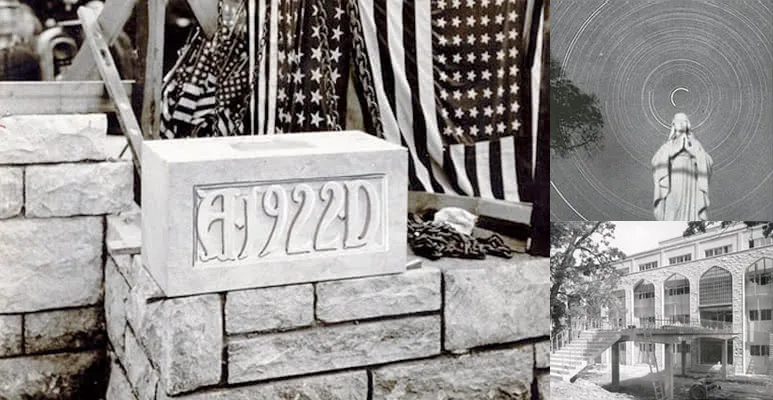History
When Jesuits founded Loyola in 1852, they looked to the very heart of their order for inspiration in choosing a name. They found their inspiration in St. Ignatius of Loyola, the founder of the Society of Jesus, and that’s how Loyola—our Loyola—became the first institution of higher education in the United States to bear his name.
To this day, we remain committed to the ideals embodied by the members of the Society of Jesus throughout its rich history. Those Jesuit ideals include an emphasis on academic excellence, the importance of the liberal arts, and cura personalis—the education of the whole person.
We strive to live up to the ideals set by St. Ignatius, and know they are integral to what Loyola has become.
Timeline
1852-Present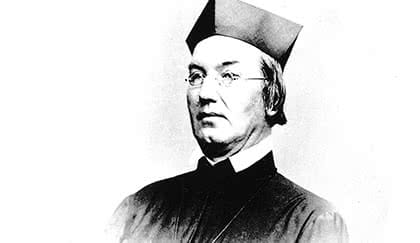
1852
Loyola’s story begins on Sept. 15, 1852, as Loyola College is founded by Rev. John Early, S.J., an Irish-American educator and former president of Georgetown University. It is the ninth oldest American Jesuit institution of higher learning—and the first institution of higher learning in the United States to bear the name of St. Ignatius of Loyola, founder of the Society of Jesus (1540).
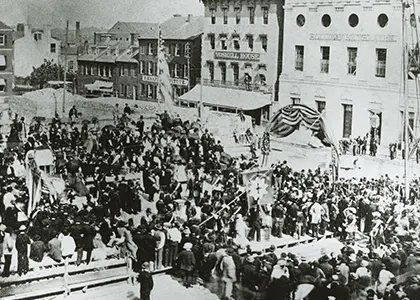
1855
The college’s first campus was in two large townhouses on Holliday Street, between East Lexington and East Fayette Streets, in downtown Baltimore. Three years after its founding, Loyola relocated to North Calvert Street by St. Ignatius Roman Catholic Church.
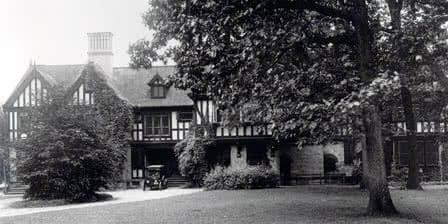
1921
Loyola establishes the Evergreen campus. In 1895, a Tudor-style mansion was built by the Garrett family in north Baltimore. This home was intended to be a wedding gift for one of their children; however, the child died during a trip to England. In 1919, the mansion was used as a Red Cross Institute for the Blind and later reconstituted as a rehabilitation center for blinded men during World War I. In 1921, Loyola purchased the property from the Garretts and moved the college from its location on Calvert Street to its current location.
1949
Graduate studies begin with Education programs. Business management was added to the graduate division in 1968, speech pathology in 1971, and finance in 1973. During those years of academic expansion, Loyola was awarded the Sidney Hollander Award for its contributions to the establishment of civil and political rights for African Americans in Maryland.
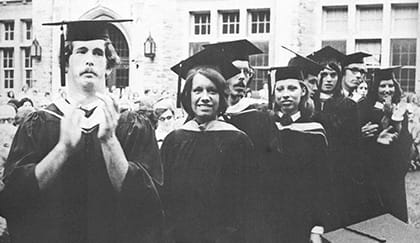
1971
A Loyola education was exclusive to men for more than 100 years—until Loyola officially becomes a coeducational institution following a merger with Mount Saint Agnes College, an all-women’s Catholic college located in Baltimore’s Mt. Washington neighborhood that began a student exchange program with Loyola College in the early 1960s.
1981
The Joseph A. Sellinger, S.J., School of Business and Management is founded. Named after the University’s 22nd president, the Sellinger School offers a rigorous business education inspired by Jesuit traditions and values. The Sellinger School receives AACSB Accreditation in 1988—a distinction held by fewer than 10% of business schools nationwide and fewer than 1.5% worldwide.
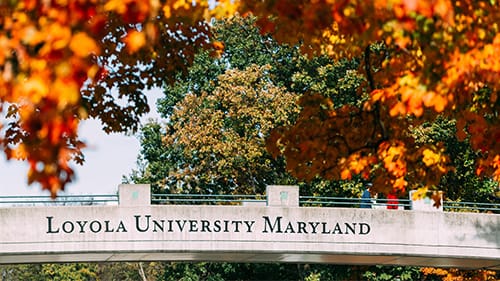
2009
Loyola College adopts a new name and designation, Loyola University Maryland, to reflect the institution’s comprehensive fields of study and graduate programs. Loyola continues to develop and build our Evergreen campus, which has existed for nearly a century, to improve its facilities, to anticipate the future of learning and Jesuit education, and to prepare for the next generation of students.
Since 1946, the department of education has been an academic pillar at Loyola. President Brian F. Linnane, S.J., announces the launch of the School of Education to coincide with the University’s designation change. Today the School of Education offers teacher education and education specialty programs at both the undergraduate and graduate levels.
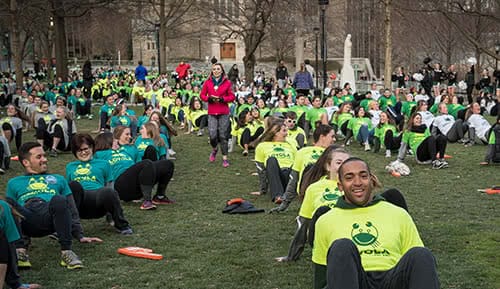
2017
Greyhounds attract national attention as Loyola breaks a Guinness World Record for the largest group crabwalk live on The Today Show on March 30, 2017. The prior record to beat: 376 individuals, set by Northeastern University in 2016. Loyola beat—and holds—that record, with 494 people crab walking for two consecutive minutes.
